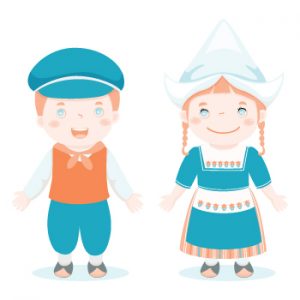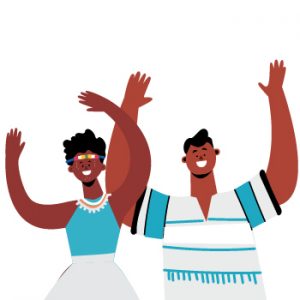Dutch Vs Afrikaans: What are the Differences?

As you know, the era between the 14th to the 19th Century was about all the European powers invading and stealing lands from different countries like Dutch vs. Afrikaans. It includes the countries with them in their territories, and enforcing their set of laws upon them. To be direct, Colonization was so common and it was not even discouraged by the superpowers of the World at that time.
Despite not being a great power, the Dutch Republic managed to colonize South Africa and assert its power over them. This was indeed a case of an exception as the Dutch Republic was not a Superpower. Colonization deprives native people of their homes and their sovereignty and enslaves them not only physically but also psychologically.
It also brings new cultures and traditions that belong to the colonizers to that land. It brings new languages along with the new set of laws that would be enforced upon the natives of that land.
In this article, we put some light upon the Dutch Colonization of South Africa, the impact it had on their lives, especially their linguistic impact on South Africa, and a brief historical background of the Dutch language and the Afrikaans language.
We will also look for the similarities and differences between both of these languages. So stick around till the end while we familiarize you with every little detail about the Dutch and the Afrikaans language.


Prologue
Every Colonial Power that colonized a land used to enter their territory in the cloak of Traders and merchants by acquiring a trade agreement like in India. We all know how rich the African Continent used to be due to the presence of natural resources of precious gemstones like Rubies, Emeralds and precious metals such as Gold.
At the end of the 16th century, Africa went through a long period of political turmoil and unrest in the continent. In the 16th Century, the European powers were exploring the World by acquiring trade agreements. The discovery of the Americas at the end of the 15th century created even a stronger passion in the European powers to navigate and find new lands, just like the discovery of America, to expand the borders of their Republics and Empires.
When the Europeans traveled to India, the sea route would go around Africa. After seeing that the Ottoman Empire and other Muslim powers had been losing their control over Africa due to political unrest and mutinies, the Europeans took advantage of it and gradually started to colonize the African Continent.
The Dutch Colonization of South Africa
The Dutch of Colonization seems like a minor coincidence to us as the Dutch settlement in South Africa began in the year 1647 when the Dutch Ship “Nieuwe Haarlem” got shipwrecked near the Ocean territory of South Africa.
The survivors of the shipwreck reached Cape and stayed there for one year at the “Sand Fort of the Cape of Good Hope” that they had built. After one year, they were finally rescued by a fleet of 12 ships by the Dutch. On their return, they persuaded the Dutch East India Company to open a trading center at the
Cape. In 1652, a Dutch Expedition of 90 settlers found their first permanent settlement at the Cape. They soon made the Cape their colony. They faced several problems from the natives, but eventually, they enslaved them all.
The Impact of the Dutch Colonization
The Dutch East India Company greatly impacted the South African Continent. They made new buildings of their architectural style, they exported Coffee from there to the Dutch Republic. They made several slaves and gained authority over the South Africans by enforcing their laws upon the natives. The Dutch had slowly become a strong Colonial Power in Europe. The settlers had also brought their culture, the language was the most significant among them all.
The Dutch Impact in terms of Language
The Dutch people in South Africa initially used the Dutch language as a way of communication and had translators who would translate the native language of the Africans to them and Vice Versa. In the 19th Century, as we look more at Dutch vs Afrikaans, we came to know that there evolved a language from Dutch, known as Afrikaans. This language was a combination of Dutch mixed with some variants of Portuguese, Indonesian and Malay.


This language got more recognition than the Dutch itself as it was spoken all over the African continent. It is still widely spoken in all of Africa and represents the historical impact the Dutch had in Africa in terms of Language.
Dutch
Dutch is a West Germanic language sharing a common ancestor with other languages such as English, German, and the Scandinavian languages. It evolved from Frankish in the 3rd to 5th centuries into Old Dutch in the 12th century.
Then, it periodically evolved into Middle Dutch in the 15th Century and at the end of the 15th Century, it developed into Modern Dutch, which is still in use today. Dutch is spoken by about 24 million people as their first language and about 5 million people as their second.
It is the national and the official language of the Netherlands and the Kingdom of Netherlands (which comprises the Netherlands anda few other overseas territories.
Afrikaans
Afrikaans is the Creole language that evolved from Dutch under the Colonialism of Africa. It has roots in Dutch and comprises of few other languages such as Indonesian, Malay, Portuguese, and the indigenous Khoekhoe languages.
It is native to South Africa. A native speaker of English and Bantu languages is also a good Afrikaans speaker. It originated in the Cape Colony of the Dutch East India Company. Afrikaans is the Official language of South Africa. Check out our latest post about Afrikaans translation services!
All the similarities between Dutch and Afrikaans
Both Dutch vs. Afrikaans are West Germanic languages. They have similar roots. Dutch and Afrikaans share mutual intelligibility, especially in written form.
About 90 to 95% of Afrikaans’ vocabulary is of Dutch Origin. Both of these languages have the single spelling and single sound of most words. Afrikaans Grammar is also more like Dutch grammar.
An Afrikaans person can easily understand and read Dutch and Dutch speakers can also interpret Afrikaans without much effort. There is no difference between the object and subject forms of personal pronouns in the plural form. Both of these languages are post-pluricentric languages.
Dutch Vs. Afrikaans: What are the Differences?
Geographically, Dutch is a European language, while Afrikaans is an African language. Afrikaans is a standard individual language unlike other dialects of Dutch. It surely does have the same ancestor as that of Dutch, but it is a Separate language, native to a different continent.
Afrikaans verbs are quite simple, unlike Dutch. Dutch has a lot of verb conjugations in contrast to Afrikaans. Also, Afrikaans contains simplified consonant clusters, while Dutch does not.

Cape Dutch Evolution and Language Policies
In the 17th century, Cape Town witnessed the establishment of Cape Dutch, a unique linguistic blend shaped by the cultural confluence of Dutch settlers and indigenous populations. By the 18th century, this distinctive language had evolved, marked by its own linguistic features. As the 20th century unfolded, Cape Dutch transitioned into a standard language of instruction, reflecting its historical roots and cultural significance.
In South Holland, where English speakers became prominent, Cape Dutch maintained its identity alongside Standard Dutch, adapting to the dynamic linguistic landscape. The evolution of Cape Dutch over the centuries also involved considerations of grammatical gender, adding an additional layer of complexity to its linguistic heritage.
The medium of instruction has played a pivotal role in shaping language policies, and in the context of Cape Malay, this influence is underscored by the use of the Arabic script. Language policies have evolved over time, with attention to details such as the use of indefinite and definite articles. In regions like the Northern Cape and Eastern Cape, where linguistic diversity is pronounced, these policies have had a significant impact.
Additionally, the national anthem, serving as a linguistic symbol, reflects the cultural tapestry of the Cape Malay community. Scholarly contributions to the understanding of these linguistic dynamics are evident in publications from entities such as the John Benjamins Publishing Company, highlighting the academic exploration of language in this rich and multifaceted context.
Linguistic Evolution and Academic Insights
Dutch spelling, with its intricacies, has influenced the Afrikaans pronunciation in unique ways, giving rise to marked forms that distinguish the language. The linguistic nuances of this evolution are explored in scholarly works, and publications by Walter de Gruyter delve into the depths of these linguistic transformations. Prys Jones, an authority in language studies, contributes significantly to the understanding of these marked forms.
The cultural and historical context of the Orange River region, with its significance in the Anglo-Boer War, further adds layers to the linguistic landscape. Exploring these linguistic transitions is akin to navigating through the archives of language evolution, much like theWayback Machine, especially in regions such as the Western Cape, where the interplay of Dutch and Afrikaans has left a lasting imprint on the linguistic fabric.
Cambridge University Press, a renowned institution, has significantly contributed to linguistic analyses, impacting the academic landscape. Margaret University College, with its scholarly pursuits, also plays a role in shaping linguistic understanding. The influence of spelling conventions, often explored in publications like NRC Handelsblad, adds depth to language studies. Within the realm of possessive pronouns and didactic concepts, ISBN978 serves as a linguistic marker, connecting scholarly works and contributing to the academic discourse.
In the linguistic context of Kaapse Afrikaans, characterized by its distinct features, the study of terms related to cattle enclosures provides insights into the cultural and historical dimensions of language. These interconnected elements showcase the multifaceted nature of linguistic exploration within academic and scholarly domains.
Linguistic Diversity and Academic Exploration
The acute accent, a diacritical mark, plays a crucial role in distinguishing vowel sounds in various languages, including African speech. The Brill Archive, known for its extensive collection, contributes to the exploration of linguistic nuances. Within Dutch titles, terms like “Koninkrijk der Nederlanden” underscore the language’s rich historical and cultural context. The impact of linguistic choices is evident in historical narratives, such as those discussed by Michael G., reflecting a complex interplay between language and sociopolitical developments, as seen in the context of the National Party.
Exploring linguistic intricacies involves examining elements like the plurality in compounds, passive voice constructions, and insights from scholars like Håkon Jahr. Academic endeavors, including those by Pearson South Africa, contribute to the broader understanding of language dynamics in diverse contexts.
Statistics South Africa serves as a crucial source for linguistic data, reflecting the linguistic diversity encapsulated in the ‘Voice of South Africa.’ The academic realm, enriched by publications from Oxford University Press and University of California Press, explores various aspects of language, including variant pronunciation and possessive forms.
The scholarly work of Louw & Roux, as exemplified in their 2005 publication, delves into linguistic intricacies, providing valuable insights into the dynamic evolution of language, especially within the context of Cape Dutch. As a language with historical roots, Cape Dutch embodies a unique linguistic journey, shaped by Dutch speakers and influenced by diverse cultural and historical factors.
Exploring Linguistic Evolution in Cape Town
Cape Town, a vibrant melting pot at the southern tip of Africa, showcases a unique linguistic landscape where African languages and Afrikaans, a derivative of a Dutch dialect, intersect. Afrikaans, spoken widely across the region by Afrikaans speakers, exhibit distinct differences from Standard Dutch, particularly in its simplification of grammatical gender and the use of the definite article.
This evolution of the language can be explored through various academic resources, including works published by Walter de Gruyter. Additionally, digital archives such as the Wayback Machine offer access to historical documents that trace the development of Afrikaans from its Dutch roots to its current form, highlighting the dynamic nature of linguistic evolution in multicultural settings like Cape Town.
The national anthem holds a special place in the cultural identity of a nation, and for Wales, the anthem “Hen Wlad Fy Nhadau” is no exception. However, the spelling of the anthem’s title has been subject to debate and scrutiny. Prys Jones, a researcher at Margaret University College, has delved into the influence of spelling conventions, particularly Dutch spelling, on the title’s presentation.
The question of whether to use a single spelling or adhere to traditional Welsh usage, which sometimes includes an indefinite article, has sparked academic discourse and linguistic analyses by scholars like Håkon Jahr. This exploration highlights the complex interplay between linguistic traditions, cultural identity, and orthographic standards in shaping the presentation of national symbols.
The study of language dynamics, particularly in Afrikaans, sheds light on phenomena such as plurality in compounds and phonetic evolution within the language. Researchers at prestigious institutions like the University of Nijmegen, the University of Kentucky, and those publishing through Amsterdam University Press have contributed significantly to this field. Specifically, the “Afrikaanse taal” has been a focal point in exploring how Afrikaans verbs adapt and transform through the study of dialect convergence in South Africa.
Publications like those from Cambridge University Press have expanded on these themes by integrating didactic concepts into the academic discourse, aiming to make the complex processes of language change accessible and understandable. This scholarly work is crucial for linguists and educators alike, encapsulating the dynamic nature of Afrikaans through detailed phonetic and grammatical analyses, as cited with ISBN978 in various academic publications.
Analyzing Progressive Verb Constructions
The progressive construction of verbs in Germanic languages, including the use of unmarked forms and specific verbs like “dink,” has been extensively analyzed in academic circles, particularly in works such as “The Germanic Languages” found on pages 496-497. Scholars at institutions such as the Center for the Study of Language at Lancaster University delve into these grammatical structures to understand their evolution and application across different dialects.
Resources like “A Grammar,” cited on pages 257-258 and 89-93, provide comprehensive insights into these constructions. These studies often appear in scholarly publications such as the Cape Monthly Magazine, which serves as a platform for disseminating research findings. Such considerations are crucial for linguists and students alike, offering a deeper understanding of language mechanics through detailed analyses, as documented in various academic PDF resources.
The progressive construction of verbs in Germanic languages, including the use of unmarked forms and specific verbs like “dink,” has been extensively analyzed in academic circles, particularly in works such as “The Germanic Languages” found on pages 496-497. Scholars at institutions such as the Center for the Study of Language at Lancaster University delve into these grammatical structures to understand their evolution and application across different dialects. Resources like “A Grammar,” cited on pages 257-258 and 89-93, provide comprehensive insights into these constructions.
These studies often appear in scholarly publications such as the Cape Monthly Magazine, which serves as a platform for disseminating research findings. Such considerations are crucial for linguists and students alike, offering a deeper understanding of language mechanics through detailed analyses, as documented in various academic PDF resources.
L.L. Pansegrouw, along with colleagues such as Arie Verhagen and Belinda Train, have contributed significantly to the field of bilingual education, as evidenced in their collaborative work published by Academia Press. Their research explores linguistic phenomena in West Flemish and other languages, reflecting on how bilingual education can be enhanced. A notable aspect of their studies is highlighted in “askOns sal lewe,” which examines the socio-political impacts of language policies under figures like Balthazar Johannes Vorster, as discussed in various academic forums, including the Bar Journal.
This body of work, published under ISBN9781853593628, also references historical and contemporary perspectives from the Société d’Emulation, showcasing the depth and breadth of linguistic research and its implications on education systems. These contributions are pivotal in understanding the dynamics of bilingual learning environments and their development over time.
Dialect Influence on Cape Town’s Linguistics
In the study of contrastive taalkunde, researchers Louw & Roux, as cited in their 2005 publication, delve into the subtleties of language usage in regions like Cape Town, where Low German influences can be seen. This linguistic analysis often contrasts the use of the definite article in various dialects and its implications on local speech patterns. The piece “Blauw van Onze” exemplifies such specific linguistic features in the context of cultural expressions and even extends to the lyrics of the national anthem, showing how language shapes national identity.
Additionally, current affairs in linguistics might cover topics like the historical evolution of terms or the etymology of local expressions, as explored by scholars like Blusse en van Braam. This breadth of research offers a comprehensive look at how languages adapt and transform within different communities, reflecting broader social and historical contexts.
South Africa’s linguistic landscape, rich with loan translations and unique grammatical constructions, is a fertile ground for academic inquiry. Scholar Prys Jones, along with other experts, has contributed to this field by examining the progressive construction of local dialects, with findings published by both Cambridge University Press and Amsterdam University Press. These studies, often featured in publications such as the Cape Monthly Magazine, delve into how languages in South Africa evolve and influence each other.
For example, the adoption of terms like “bodily harm” and “bottle fly” showcases the integration of English legal and biological terminology into local languages, a topic also explored in the African Law Reports. This research not only enriches our understanding of linguistic adaptation but also highlights the dynamic interplay between language and culture in South Africa.
South Africa’s linguistic landscape, rich with loan translations and unique grammatical constructions, is a fertile ground for academic inquiry. Scholar Prys Jones, along with other experts, has contributed to this field by examining the progressive construction of local dialects, with findings published by both Cambridge University Press and Amsterdam University Press.
These studies, often featured in publications such as the Cape Monthly Magazine, delve into how languages in South Africa evolve and influence each other. For example, the adoption of terms like “bodily harm” and “bottle fly” showcases the integration of English legal and biological terminology into local languages, a topic also explored in the African Law Reports. This research not only enriches our understanding of linguistic adaptation but also highlights the dynamic interplay between language and culture in South Africa.
At Margaret University College, scholars like Håkon Jahr and the team of Louw & Roux engage in deep linguistic analyses to explore the influence of spelling conventions on phonetic evolution, particularly in the context of Afrikaans, Dutch, and English translation. Their research, often published by South Africa’s Cambridge University Press, focuses on how these languages have interacted historically and how these interactions have influenced their contemporary forms.
For instance, the phonetic evolution observed in Afrikaans can be partly attributed to its Dutch origins, which is evident in the comparison of Dutch titles and their Afrikaans counterparts. These studies underscore the dynamic nature of language as it adapts to changing linguistic environments and the significant role that spelling conventions play in this process, offering invaluable insights into the mechanics of language change and development.
Epilogue
In conclusion, both of these languages are classical in their own ways. Though Afrikaans is the daughter language of Dutch, in our opinion, it developed more than Dutch at a much more rapid rate. It also gathered more annual speakers than Dutch.
Some people consider Afrikaans a dying language. We think that this may not be true for another century because the rate at which Afrikaans evolved is quite impressive ,and it would be unnatural for such a classical language to get vanished in the pages of history.
Frequently Asked Questions
Dutch and Afrikaans both originate from the Dutch language. Afrikaans, however, developed independently in South Africa from 17th-century Dutch.
While they share a common ancestry, Afrikaans has simplified grammar, fewer verb conjugations, and distinctive vocabulary compared to Dutch.
Afrikaans pronunciation has evolved independently, featuring distinct sounds and accent patterns that differ from contemporary Dutch pronunciation.
The isolation of Dutch settlers in South Africa, exposure to various languages, and the need for communication with indigenous people played key roles in Afrikaans’ development.
Dutch is spoken in the Netherlands and Belgium, while Afrikaans is one of the official languages in South Africa and Namibia. Dutch remains a global language, while Afrikaans is primarily spoken in Southern Africa.




